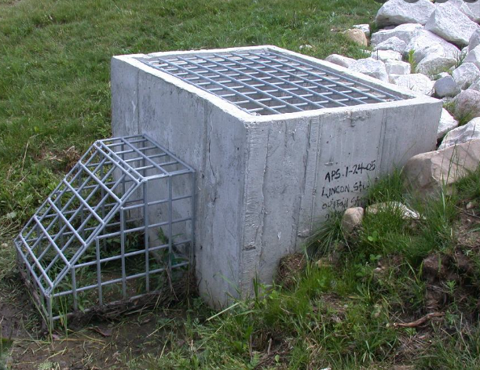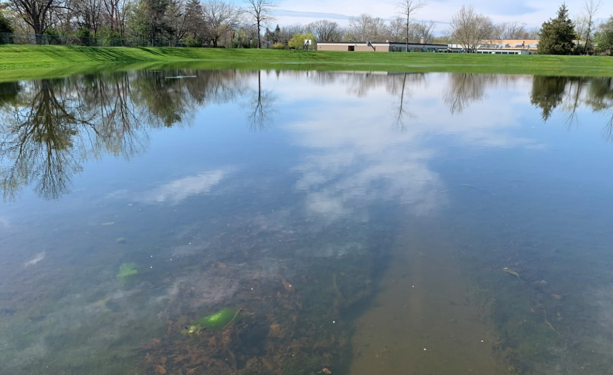April Showers can bring May flowers and flooding to your community if you don’t maintain your detention basin properly.
Just about every community has a detention basin but you may not know much about them. A detention basin is a basin carved into the ground to temporarily store stormwater after a rainstorm. Detention basins allow for stored water to be released slowly to adjacent properties to prevent flooding.
An outlet structure controls the rate of water leaving the basin and is the site of one of the most common issues with detention basins. Clogged outlet structures and other issues can lead to overflow and flooding but proper attention and maintenance can prevent this issue.
Pay Attention To Detention Basin Water Levels Between Storms
You can determine if you might have a clogged outlet structure by noticing how full your basin appears at key times. Basins are intended to be dry between storms and should be empty within approximately 72 hours. Basins that stay full too long can make the structure ineffective and lead to additional issues like mosquito breeding, poor water quality, and odors.
Maintain Your Detention Basins and Outlet Structures
In addition to noticing water levels between storm events, proper maintenance can prevent detention basin-related flooding.
Proper maintenance includes regularly inspecting the basin for cracking, spalling, erosion, and deterioration. Sediment removal, disposal of debris, and inspection of components are also part of proper maintenance.
Further, proper maintenance involves regularly removing obstructions and cleaning out the outlet structure. You should check the outlet structure at least a few times each year to see if anything obstructs water from flowing out.
Properly maintaining your detention basin also includes addressing any silt in your low flow channel and any issues with rip rap. Riprap includes stones placed where the water enters your basin. If the water enters too quickly or without rip rap, there is potential for erosion. The riprap helps to slow the water flow but needs to be maintained as it can move over time.
If you don’t maintain your basin, the water will build up. In cases where the water has already built up, take time to clean the outlet structure where it is clogged. You’ll notice that the water level will drop and water can drain properly.

In addition to properly maintaining your basin, riprap, low flow channel, and outlet structure, you can take additional steps to avoid detention basin-related flooding by cutting your grass to avoid cattails from growing and clogging it.
Prevent Detention Basin Flooding
Now that you understand how a detention basin prevents flooding in your community and the maintenance steps you can take to prevent issues that lead to flooding, be sure to take a look at your detention basin this month. If it needs maintenance, ensure you have that addressed and if you’d like help in determining potential issues with your detention basin, contact us here.
About Kipcon Engineering
Kipcon is a full-service engineering firm dedicated to maintaining your community’s property values. We are a team of professional engineers. Licensed inspectors, drone pilots and reserve specialists committed to enhancing the physical and financial stability of your property through innovative service and years of experience.
Kipcon provides a wide variety of services, from consultation on repairs and replacements to inspections and Reserve and Transition Studies.

